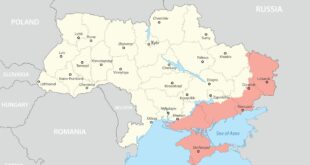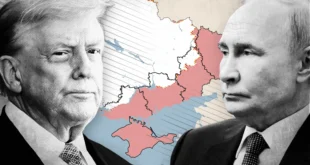Dr. Shehab Al-Makahleh
On July 7, Israeli Prime Minister Benjamin Netanyahu arrives in Washington—not as a routine diplomatic guest, but as a key player in a volatile geopolitical theater on the verge of eruption. Analysts have dubbed it a “war visit”—one that could pave the way for a joint U.S.–Israeli military decision following the expected closure of the Gaza front.
Despite employing what some call the “Fourth Weapon”—psychological warfare through mass civilian targeting—Israel has failed to crush Hamas or achieve a decisive victory in Gaza after months of bombardment. As a result, Israeli leadership is seeking to exit the Gaza quagmire through a managed ceasefire, possibly brokered by Egypt and Qatar, in order to shift its focus to a greater looming threat: Iran.
Behind closed doors, Israeli security officials speak of a “golden window” for action before the end of 2025—before a potential U.S. administration change and before Iran recovers economically through sanctions evasion. The envisioned campaign isn’t necessarily a full-scale war, but could involve cyber warfare, precision strikes on uranium enrichment sites like Natanz or Fordow, or targeting Iran’s proxies in Syria, Iraq, and Lebanon.
Washington’s condition for any such maneuver is clear: Gaza must be silenced first. Hence, Netanyahu’s push for a symbolic ceasefire, partial prisoner swaps, and reconstruction promises—all wrapped in media packaging as a “strategic victory.” In reality, it’s a tactical repositioning for the bigger battle ahead.
Regionally, the landscape is rife with tension:
-
Lebanon remains politically paralyzed, while Hezbollah inches closer to confrontation with Israel.
-
Syria is collapsing economically and losing control over key regions.
-
Iraq faces internal fragmentation and disputes over U.S. troop presence and PMF dominance.
-
Egypt is in quiet economic distress, amid rumors of rifts within its military elite.
In this context, Netanyahu’s visit resembles less a diplomatic mission and more the spearhead of a pre-emptive joint U.S.–Israeli effort to contain Iran before it becomes untouchable.
The White House—whether under Biden or a new president—wants to demonstrate firmness on the Iranian file. Recent reports suggesting uranium enrichment nearing 90% (weapons-grade) have sparked urgency. For Israel, silence means acquiescence—an existential threat.
But the risk is that a calculated escalation becomes an uncontrollable wildfire. Any Israeli strike on Fordow or Natanz could provoke a direct Iranian response, or retaliatory action from Tehran’s allies across the region. The involvement of actors like the Houthis could spark Gulf-wide confrontation. The worst-case scenario? A regional war entangling energy, refugee flows, sectarian strife, and global security.
Thus, Netanyahu’s visit is not just symbolic—it is a turning point. It could either produce a temporary arrangement allowing for a new negotiating track, or ignite the gates of regional hell.
Summary:
-
The U.S. may grant Israel limited approval for precision operations against Iran.
-
Gaza will be muted via Arab-mediated ceasefires to free the stage for Iran.
-
Escalation is imminent, but hinges on coordinated political and media maneuvering.
Netanyahu is playing his final cards. The battlefield will write the final chapter.
 Geostrategic Media Political Commentary, Analysis, Security, Defense
Geostrategic Media Political Commentary, Analysis, Security, Defense





